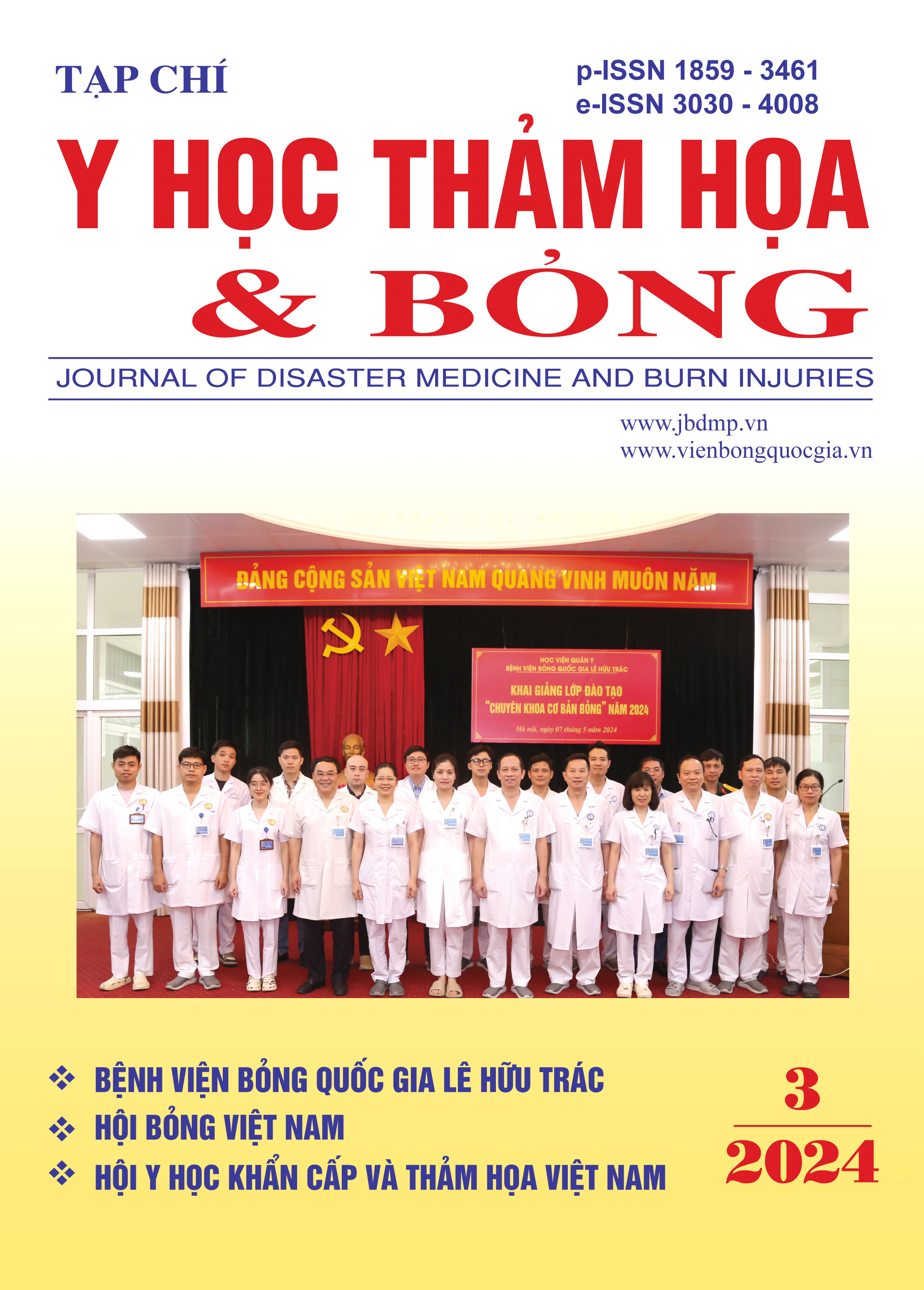Study on prognostic factors of mortality in elderly burn patients
Main Article Content
Abstract
Objectives: Evaluation of factors predicting mortality in elderly burn patients.
Subjects and methods: Retrospective study on 173 elderly burn patients (over 60 years old), burn extent ≥ 10% of total burn surface area (TBSA) treated at the National Burns Hospital from 01/01/2021 to 31/12/ 2022. Patients were divided into two groups survival and death and were compared in terms of the characteristics and outcome.
Results: The mortality rate was 17.92%. Patients with 2 combined diseases had a significantly higher mortality rate than patients without combined diseases and with 1 combined disease (p < 0.05).
Multivariate analysis showed that the increased deep burn area and the presence of inhalation injury were independently associated with mortality (p < 0,05). An increase of 1% of a deep burn area increases the risk of death by 0.078 units, the presence of inhalation injury increases the risk of death by 3.762 units.
The PBI scale and the BVB (BVB = 0,078*deep burn area + 3,762* inhalation injury - 2,850; inhalation injury (No = 0, yes = 1)) equation had good predictive value for mortality and the Hosmer - Lemeshow test shows that the regression equation was suitable for mortality (p > 0.05). The BVB mortality prediction equation has the highest predictive value (AUC = 0.85; sensitivity: 77.42%; specificity: 84.51% and accuracy: 83.24%).
Conclusion: The increase in deep burn areas and the presence of inhalation injury increases the risk of mortality in elderly burn patients. The mortality prognostic value of deep burn area combined with inhalation injury was at a good level.
Article Details
Keywords
elderly burn patients, mortality
References
2. Wearn C., Hardwicke J., Kitsios A., et al. (2015). Outcomes of burns in the elderly: revised estimates from the Birmingham Burn Centre. Burns, 41 (6), 1161-1168.
3. Jeschke M.G., Peck M.D. (2017). Burn care of the elderly. Journal of Burn Care & Research, 38 (3), e625-e628.
4. Cheng W., Shen C., Zhao D., et al. (2019). The epidemiology and prognosis of patients with massive burns: a multicenter study of 2483 cases. Burns, 45 (3), 705-716.
5. Toppi J., Cleland H., Gabbe B. (2019). Severe burns in Australian and New Zealand adults: Epidemiology and burn center care. Burns, 45 (6), 1456-1461.
6. Wang W., Zhang J., Lv Y., et al. (2020) Epidemiological investigation of elderly patients with severe burns at a major burn center in Southwest China. Medical Science Monitor: International Medical Journal of Experimental and Clinical Research, 26, e918537-918531.
7. Stylianou N., Buchan I., Dunn K.W. (2014). A model of British in-hospital mortality among burns patients. Burns, 40 (7), 1316-1321.
8. Bayuo J., Botchway A.E. (2017). Burns among older persons: A narrative review. Burns Open, 1 (1), 2-8.
9. Jeschke M.G., Pinto R., Costford S.R., et al. (2016). Threshold age and burn size associated with poor outcomes in the elderly after burn injury. Burns, 42 (2), 276-281.
10. Tian H., Wang L., Xie W., et al. (2018). Epidemiologic and clinical characteristics of severe burn patients: results of a retrospective multicenter study in China, 2011-2015. Burns & Trauma, 6,


